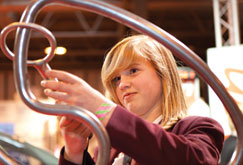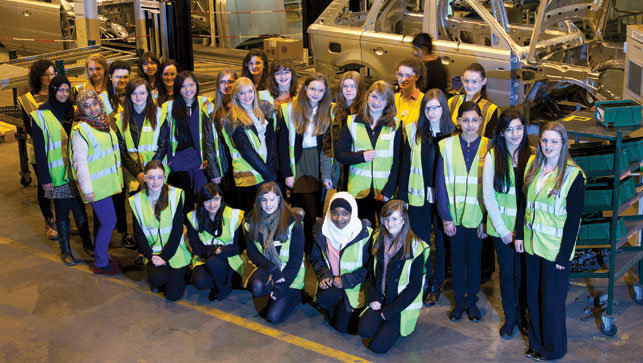
Participants in the ‘Inspiring Tomorrow’s Engineers: Young Women in the Know’ event
We’ve heard it often enough that the UK has an engineering skills shortage.
According to a recent report published by EngineeringUK, the working name of The Engineering and Technology Board, Britain needs to double the number of engineering graduates and triple the number of engineering apprentices by 2020 in order to meet industry needs.
Recruiting young men into the profession is one thing but recruiting young women, is another matter entirely. As a WISE (Women in Science and Engineering) survey points out, in 2010/11 only 430 females completed an engineering apprenticeship, compared to 10,800 males, and in that same year only 15 per cent of engineering and technology degrees were awarded to females.
These are not great statistics if we want to swell the amount of female engineering professionals, which currently stands at just six per cent. “Fewer than one in ten of Britain’s engineers are women, the lowest proportion in Europe. This makes no sense at all for an industry facing a skills shortage,” said Trudy Norris-Grey, chair of the WISE Board, at an event at the beginning of June.
Engineering is not dirty work
There seem to be two issues as to why young women don’t view engineering as a viable career choice. Firstly, engineering is stereotypically viewed as men’s work often associated with dirty factories and overalls with an oily rag in one hand and a spanner in the other.
This is a myth the government is all too aware of, as Business Secretary Vince Cable made clear in his impassioned plea earlier this year for more women to enter the profession:
“We have a chronic shortage of engineers in the country as a whole, at graduate, post graduate and craftsmen level. Women are a great source of potential, which, as a country, we have not tapped before. It partly goes back to stereotypes. Girls doing dolls, boys doing cars…it is a hard slog because we are fighting against an old cultural tradition.”
The second issue is that young women don’t seem aware of the vast opportunities available to engineers, which is far removed from any factory floor. Engineering is varied, fulfilling and exciting but this message isn’t being successfully communicated.
However, there are organisations and initiatives on the case trying to change these perceptions of engineering among young women. Together with campaigns such as WISE, which includes an annual awards ceremony celebrating female engineers, there is the Women’s Engineering Society (WES).
The Institution of Engineering and Technology (IET) also invests a great deal of time and resources into attracting more women into engineering through an awards and scholarship scheme.
Then there are companies, like Siemens and Jaguar Land Rover, which actively promote young women into their workforce by running apprenticeship and training schemes. In fact, Jaguar Land Rover recently announced a scholarship programme in conjunction with WISE.
Female role models
The engineering profession also needs more inspiring female role models and ambassadors. Meeting or learning about a successful female engineer and the work she gets involved in, can have a huge impression on young girls who are contemplating their future careers.
Role models like Dr Caroline Simcock, global compliance and approvals manager at Dyson, who has excelled in a ‘man’s world’ by not only progressing in her career but actively being involved in the Institution of Engineering Designers (IED) and helping to raise the profile of engineering.

Dr Caroline Simcock – global compliance and approvals manager at Dyson
“I’ve done a lot with schools and universities over the years and I’d like to continue doing that because it is difficult to bring the right talent into engineering. I don’t think engineering gets promoted strongly enough,” she says.
Being interested in both arts and sciences at school Simcock was leaning towards a career in architecture until she discovered, through her own research and advice she sought, of the opportunities available in engineering.
She decided to pursue an MEng & Man, an extended masters in mechanical engineering, manufacturing and management, at Birmingham University as this course looked to satisfy her desire for creative problem solving as well as her love of maths and science.
She didn’t realise the full implication of pursuing what was traditionally a man’s profession until her first day of university in 1996 when she realised she was one of six females out of the 130 on her course.
This trend continued into her profession. Upon graduation in 2000 she started her first job at Hymatic Engineering (now Honeywell), a Redditch-based aerospace defence company, where she remained for the next ten years and for the majority of the time she was the only female in a team of around 20.
“My role was primarily in military support working on cryogenic coolers and high pressure vessels including seeking systems for missiles. It was a very all rounded role involving every aspect of engineering – from initial design through to qualification and prototyping,” she explains.
Although Simcock did very well in her job and was more than capable, she often felt that being a female meant she had to work harder at proving herself. “I would honestly say I had to put in 200 per cent to demonstrate the equivalent level of a male engineer.
“Despite the brilliant grounding I got at Hymatic in terms of the exposure I received, whether it be procurement, quality or customer facing roles, I certainly wouldn’t have become the management grade that I am now at Dyson within that environment. I don’t think the opportunities were there for a female.”
Proving herself
Simcock certainly did prove herself as she not only achieved her Chartered Engineer status just four years after completing her degree, the minimum time it takes, but also went on to complete an Engineering Doctorate in Materials for High Performance Applications in Aerospace, which took her six years through Birmingham University.
“In my mind, mechanical engineering is one aspect but I think an understanding of materials is really important and thankfully Hymatic sponsored my study.”
“I did this all in the vein of setting myself in good stead as I dealt a lot with international customers so if they heard my name or I came across them in a first meeting they may question my capabilities so I wanted to allay any fears they may have.”
In May 2010 Simcock moved to the British technology company Dyson, based in Malmesbury, taking on a role as project manager within its digital motor division. “Dyson fit with my original aspirations of being in a design environment and problem solving.
I believed it to be a very creative and imaginative sort of business where I could leave my own impression on things and in the three years I’ve been here, that’s certainly how it’s panned out.”
Dyson has made no qualms about the fact it’s crying out for engineers – its adverts regularly feature on our Develop3D jobs pages. There are 1,536 engineers and scientists at Dyson worldwide, which make up a third of the company.
At the helm is the enigmatic James Dyson, an engineer who invented and then launched the first bagless vacuum cleaner in 1983.
Like the rest of the company, James Dyson is in the office pretty much every day doing the same hours as everyone else.
“I think you’ll be surprised at how involved he gets with everything on a daily basis. He is really there at the business end driving the decisions, expressing how he feels about something whether he is a happy with the design or if he wishes to make changes. He is quite a perfectionist really.”
The Sky’s the limit
Simcock remembers in her job interview being told that they sky’s the limit. For an ambitious engineer like herself, this was just what she wanted to hear and progression came quickly because within just seven months of starting she took on a programme manager role where she built her own team of seven project managers.
“I designed all the processes and led all the projects on a programme basis – a combined risk and resource analysis approach. That was quite an exciting role within the Dyson digital motor group,” she says.
Further promotion came again three months ago when Simcock was approached to take on the role of global approvals and compliance manager, a very big step in a completely different area.
She is now responsible for teams across the UK, Malaysia and Singapore (where the company’s manufacturing facilities are based) ensuring that Dyson’s products are compliant to sell in 67 countries across the world.
As well as progressing up the Dyson ladder Simcock has also been actively involved in setting up a professional development scheme with the IED, IET and IMechE within Dyson to support its employees become registered engineers.
This pioneering multi-way scheme took a lot of hard work and dedication to drive from inside the business. “I have now also been asked to join the IED council, which is a very good opportunity to help shape the institution and the direction it takes,” says Simcock.
Words of advice
Simcock is very modest about her achievements and is of the mindset that if you are going to do something, do it to the full. “I love what I do and have a real passion for engineering. It’s the satisfaction of problem solving and getting a result. What would the world be without engineering?”
So, what advice would she give to young women who are thinking of going down the same path as she has?
“I’d say that it can be a tough job at times with a lot of guys around you (for instance I’ve just taken on a male-dominated team of 40) some of whom don’t expect a female to be in this kind of position, but take it as it comes and do your best. Be confident in your own abilities, don’t be afraid to ask questions, always stick to your guns if you strongly believe in something and follow it through.”
As Simcock proves, a woman in engineering can excel in many and diverse roles without an oily rag or spanner in sight. “My role at Dyson is very exciting and varied.
There are so many new products we’re exploring and we are going to be in all kinds of markets very soon. There is a whole host of challenges in getting there but that’s the exciting part,” smiles Simcock.
Dyson.com | ied.org.uk
wisecampaign.org.uk | wes.org.uk
A WISE move to get girls into engineering
During May, WISE (Women in Science and Engineering) and Land Rover launched the Range Rover Evoque WISE Scholarship.
This scholarship will provide a £9,000 bursary to three female students or apprentices who would like to explore a career or further studies in engineering. In addition the winners will also be provided with mentoring support from both Land Rover senior engineers and WISE representatives.
The campaign was launched by Zara Phillips whose mother, Princess Anne, is the patron of WISE, an organisation that helps other organisations to inspire women and girls to pursue science, technology, engineering and mathematics (STEM) as pathways to exciting and fulfilling careers.
In launching the campaign Zara Phillips spoke about how inspiring both her grandmother, the Queen, and her mother were in encouraging young women to consider a career in engineering.
The Queen, then Princess Elizabeth, joined The Auxiliary Territorial Service (ATS), the women’s branch of the British Army during the Second World War, at her own insistence in 1945, aged 18.
Having enlisted as a Subaltern, the Queen progressed by the end of the war to the rank of junior commander after completing course No. 1 at the Mechanical Training Centre of the ATS. As part of her training to become a fully qualified driver, she learnt how to fix a car, including changing the wheel and basic engine maintenance.
Speaking about the Scholarship, WISE director Helen Wollaston says, “The greatest British brands emerged through creativity, innovation and passion — all qualities which shine through all the female engineers I have met, but at the moment, there are far too few of them.”
This new scholarship offers a really good start for a young woman entering the engineering profession.
The industry needs to attract more female talent; this is a wonderful opportunity to do just that.”
The Range Rover Evoque WISE Scholarship is open to any woman who has arranged an engineering based apprenticeship or has a confirmed place on a higher education engineering course. For more information and to apply for sponsorship visit the website below.
wisecampaign.org.uk/women
Eight women making their mark in engineering
Ann-Marie Jones
Job title and company
Stress engineer, Portsmouth Aviation.
What does your current job role entail?
Stress calculations, FEA modelling, signing off engineering drawings as well as compiling Certificates of Design.
How did you become interested in a career in engineering?
My father and brother are both engineers in the RAF so it has always been an interest.
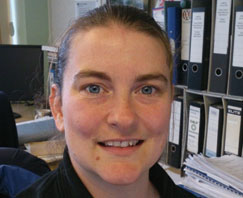
What and where did you study?
BEng (Hons) Aeronautical Engineering at the University of Salford (full time) and
MSc Airworthiness at Cranfield University (part time whilst working).
What was the ratio of females to males at your university and subsequent job roles?
Salford University: 1 in 10.
Cranfield University: 1 in 10.
Portsmouth Aviation: 1 in 30.
What is the most exciting or interesting project you’ve been involved in?
Integration of Paveway II (UK) on to Typhoon.
How do you think we can go about getting more girls interested in engineering?
When I was 16 I attended a ‘Women in Engineering’ week at Salford University. This involved industrial visits, presentations and teamwork sessions, which helped to increase my interest in engineering. I’m not sure if these are still run but I think they are really useful. Girls have to have that initial interest in engineering to do something like this, so I’m not sure what can be done that hasn’t already been tried. I don’t think giving bursaries out is the answer as, in this day and age where females are not discriminated against for wanting to go into engineering, it is unfair on the males.
Nivedita Kulkarni
Job title and company
Mechanical analysis engineer at Intelligent Energy, Loughborough.
What does your current job role entail?
Structural, thermal and fluid analysis of a fuel cell and associated systems.
How did you become interested in a career in engineering?
I always loved technology and was quite a tomboy. I grew up in a rough and tough environment in a small town in India. I never played with dolls but Meccano, cars and toy planes and was fascinated by bikes.
What and where did you study?
Firstly at Sinhagad College of Engineering at Pune University, India, and then a Research Masters in Aerodynamics research (Adv. Mechanical Engineering) at the University of Sheffield.
What was the ratio of females to males at your university and subsequent job roles?
During my under graduate degree, I was one of two females in 60+ students. The ratio did not change much during my masters and in current job role I also meet very few female engineers.
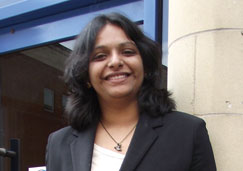
How do you think we can go about getting more girls interested in engineering?
People say being an engineer is hard work. This might be true to some extent but there are so many engineering roles where physical strength is not needed but still this ‘male dominated sector’ image is very fixed everywhere in the world. Many highly capable girls fall victims to this and do not receive an adequate maths and science education.
Also the negative image of engineering being a non glamorous field stops girls considering engineering as a brilliant area to build their career in. The lack of women role models in the profession might be one of the reasons.
Siobhán McGrath
Job title and company
PhD student at Cranfield University and Secretary General at European Young Engineers (EYE).
What does your current job role entail?
As a PhD student I research how drinking water treatment processes can adapt to climate change while continuing to safeguard public health.
How did you become interested in a career in engineering?
I enjoyed science in school and really liked the problem solving elements of mathematics and technical graphics. I was also interested in the environment and how society depends on it, which led me towards environmental engineering.
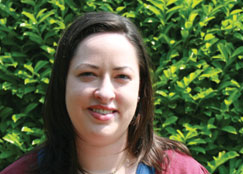
What and where did you study?
Environmental Engineering at the National University of Ireland, Galway (NUIG) followed by a master’s degree in Water and Wastewater Engineering at Cranfield University. After a couple of years in the water industry I returned to Cranfield University to study for a PhD in drinking water treatment.
What was the ratio of females to males at your university and subsequent job roles?
Undergraduate: 25% female.
Masters: 40% female.
Water industry: colleagues mostly male. PhD program: 25% female.
How do you think we can go about getting more girls interested in engineering?
Engineers are often assumed to work on their own, carrying out calculations on a computer. I think that the best way to promote diversity among engineers is to promote how diverse the opportunities in engineering are. A career in engineering involves working with others, it helps people, improves the world and can also take you anywhere in the world.
Philippa Mothersill
Job title and company
Research sssistant and masters student in the Information Ecology group at the MIT Media Lab, Cambridge, Massachusetts.
What does your current job role entail?
When I was a design engineer at Gillette, I contributed to the development of new products. Now at the Media Lab, I am researching how objects can dynamically communicate information to users.
How did you become interested in a career in engineering?
At school I liked maths and physics, and I found engineering to be an inspiring combination of learning about how things work and learning how to make them.
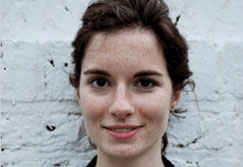
What and where did you study?
MEng in Aeronautical Engineering at University of Bristol followed by a joint MA and MSc in Industrial Design Engineering at the Royal College of Art and Imperial College. After three years in industry, I’m now studying for a Masters in Media Arts and Sciences at MIT Media Lab.
What was the ratio of females to males at your university and subsequent job roles?
Moving from pure engineering to the design and technology field in academia, the ratio of other women I’ve worked with has increased from 1:10 to 1:3.
How do you think we can go about getting more girls interested in engineering?
Based on my own experience, and that of mentoring young female interns, it seems like women are more interested in the end goal, and engineering is a way to get there (rather than being enthused by the actual process itself).
There is so much incredible stuff that you can make using engineering and design; let’s get women into engineering by inspiring them to make they stuff they want to, and showing them the tools that they need to do it.
Harriet Ashworth
Job title and company
Project Engineer (within Product Development) at Jaguar Land Rover, Gaydon, Warwickshire.
What does your current job role entail?
I work on the planning and development of future Jaguar and Land Rover / Range Rover vehicles.
How did you become interested in a career in engineering?
I enjoyed most subjects at school and really didn’t know what to do. I was lucky enough to get onto a WISE ‘girls into engineering’ week at Bath University during the summer holidays (it is good to see that this course is still running 30 years later!) and realised that I would enjoy engineering, so chose Maths and Sciences to study at A-Level.
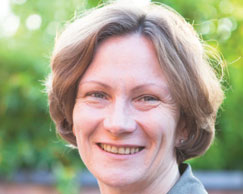
What and where did you study?
Mechanical Engineering BEng at Bradford University.
What was the ratio of females to males at your university and subsequent job roles?
Bradford Unversity: 10% females.
Previous roles: 1 to 2% feamles.
Jaguar Land Rover: 20% female in technical roles in my area of Product Development.
How do you think we can go about getting more girls interested in engineering?
The ‘girls only’ courses, such as the WISE course, is a good idea – it certainly worked for me! Other than that, simply the promotion of engineering as an interesting and satisfying career generally is important.
I’ve been a member of WES (Womens Engineering Society) for many years which works very hard to spread the word that engineering is a choice for all. It also runs conferences every year, which I’ve always enjoyed. The experience of being in conference rooms full of engineers where the men are in a minority, is a real novelty!
Haley Walls
Job title and company
Trainee design engineer at Weston Body Hardware, Redditch, Worcestershire.
What does your current job role entail?
Generally I support the engineering team by producing detailed drawings and helping out where needed.
How did you become interested in a career in engineering?
I have always been interested in design but my interest in engineering came when I started studying and I began to introduce engineering modules into my degree. Weston Body Hardware then moved me from the shop floor into Design Engineering and I was sent on a Solidworks course. This opened up a whole new world to me and I haven’t looked back.
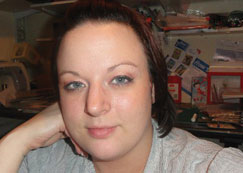
What and where did you study?
At high school years I only studied (in relation to engineering) Design Graphics. However, since 2010 I have been studying with the Open University and hope to complete a degree in Design & Innovation, with an estimated completion of 2015.
What was the ratio of females to males at your university and subsequent job roles?
Open University: hard to tell but would say 20% females.
Weston Body Hardware: 1 in 4.
How do you think we can go about getting more girls interested in engineering?
I attended a state school, and in my opinion I think it would’ve been more encouraging to have a female lecturer so girls had someone to look up to.
I also feel that in my experience, engineering was not explained fully to recognise the vast career options open to you. Instead it was left for you to believe it was only ever something to do with cars. I also feel that there should have been more flexibility when choosing courses for your last two years at school.
Becky Pilditch
Job title and company
Founder, Bare Conductive Ltd, London.
What does your current job role entail?
In 2008 I helped to develop a consumer-friendly conductive paint along with three others whilst studying. We formed Bare Conductive Ltd and now work together to distribute this technology to consumers as a brand new platform for prototyping, experimenting and learning about electronics, and exploring a range of exciting future applications.
How did you become interested in a career in engineering?
I really enjoyed both maths and art and a career in design and engineering held the appeal of being able to combine them. At the time my school had timetabled maths and art in the same period as they were not expecting students to be taking both!

What and where did you study?
Mechanical Engineering, Imperial College London and
Innovation Design Engineering, Royal College of Art.
What was the ratio of females to males at your university and subsequent job roles?
Imperial College: 15%
female.
Royal College of Art: 33%
female.
Bare Conductive Ltd: 50% female.
How do you think we can go about getting more girls interested in engineering?
There is a stereotype that engineering is about cars, rockets and planes which arguably appeal more to boys than girls.
In the real world there are a whole host of applications from programming the lighting for a West End show to developing human-centred prosthetics. We should also not underestimate the positive impact of inspirational women working in science and engineering education. I would have certainly have found it inspiring to have had such a teacher at school.
Christine Longwell
Job title and company
PLM Competitive Intelligence Analyst – Siemens Software, South Carolina, US.
What does your current job role entail?
Essentially, I study the PLM market, including CAD and digital manufacturing.
How did you become interested in a career in engineering?
Initially I was interested in physics, but engineering is much more marketable. But instead of being determined to make things, I am more determined to help people make things. I love a good shop tour. I still get positively giddy.
What and where did you study?
Mechanical Engineering at the University of Maryland. I was a leader in the school’s Society of Automotive Engineers chapter, and we built some impressive Hybrid Electric Vehicles.

What was the ratio of females to males at your university and subsequent job roles?
My graduating class was 93% male. I really just got used to it, and to this day I am still just “one of the guys”. I know that I probably stand out a bit, but I have learned to live with being conspicuous.
How do you think we can go about getting more girls interested in engineering?
I really couldn’t say. For me, I can’t imagine not being interested in engineering. Engineers are the people who make things, and I find that so fundamentally interesting.
I guess the path to get here can be a little bit intimidating, and hopefully that can change.
I think one of the things I would focus on is teaching girls at a young age that the work they do in their lifetime is important. There are a lot of male role models, but society has typically shown that women’s legacy is more in family contributions.
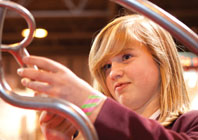
Tipping the balance in a male-dominated industry
Default


